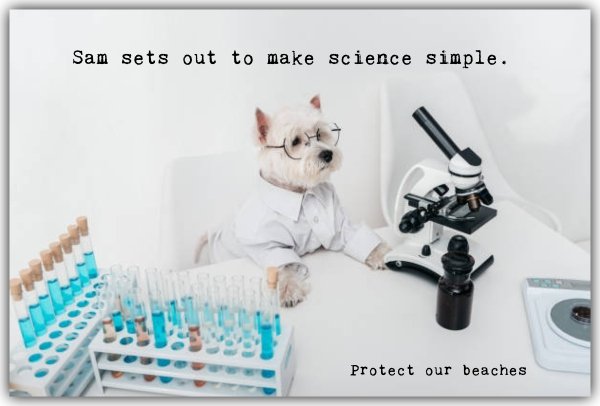
Carol Altmann – The Terrier
The sexy Wannon Water sequel: Meet Dr Sam, the West Highland Water Scientist.
Dr Sam is here to help us have a say on the Warrnambool sewage treatment plant $40m upgrade which is actually not sexy, but boy, it’s important.
What happens next at that plant sets up what will happen off Thunder Point for the next 20 years.
It’s a big ask for us humble citizens to get our heads around the full proposal.
How can we possibly know whether it’s the best we can do for our beautiful ocean?
But we have until 1 July to express an opinion, no matter how humble.
In digesting this WW plan, Dr Sam and I have been able to take a bit of a short cut – and you can too.
I have been able to tap into scientific and environmental experts who are helping the Clean Ocean Foundation with its response.
They have shared some of their thoughts with me, to pass on to you.
This means that if you want to make a comment, you don’t have to feel overwhelmed and have some handy starting points.
What follows is a top 10 list of some of the very detailed concerns being compiled by the COF. At the end is a link to an extended mix of these tips.
We are giving the simple version here, but the message is clear: we need to invest in new ways of doing things, not just do more of the same for the next 20 years.
This is our chance to stand up for the sea.
Here is your Terrier 10-point cheat sheet:
1. Where does the sewage go if the treatment plant fails, or partially fails?
2. Risks to human health from exposure to the effluent both inside and outside the mixing zone via fishing, diving, snorkelling and rock pooling.
3. The phosphorus concentrations – largely from Warrnambool Cheese and Butter – are about 10 times higher than for a similar plant. This can lead to algal blooms.
4. Micro-plastics will still be able to make it through the screening process and into the sea.
5. There is no plan for effluent disinfection. Physical, or chemical disinfection will provide a much safer marine environment.
6. The amount of effluent discharged each day will grow from 16 megalitres to 26 mgl a day, which means more pollutants will also be discharged.
7. The upgrade doesn’t take into account ‘new’ pollutants and how these will be handled, such as micro plastics, organo-chlorines and pesticides.
8. There is no deep exploration of ways to reuse/recycle the wastewater or reduce the energy consumption of the upgraded plant.
9. There must be an upgrade of technology, not just an expansion of the existing systems.
10. Industries that create the vast majority of the waste should be paying more toward the plant upgrade to make it best practice and future proof.
Click here for the extended mix.

